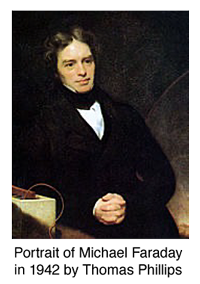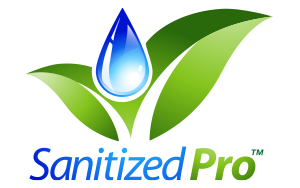ABOUT...

SanitizedPro™ is composed entirely of Hypochlorous Acid (HOCl) and is made by combining non-iodinated salt with regular tap water, then subjected to a process of electrolysis. It is a known fact that HOCl is a strong oxidizer, disinfectant, antimicrobial, etc. This technology was originally discovered by distinguished English Physicist and Chemist Michael Faraday when he developed his Laws of Electrolysis in 1833. Conducting electrical current across two electrodes in a salt brine solution produced chlorine gas (Cl2), sodium hypochlorite (NaOCl or bleach), hypochlorous acid (HOCl), sodium hydroxide (NaOH), hydrogen gas (H2), ozone (O3), and traces of other nascent oxidants. SanitizedPro™ uses proprietary manufacturing processes that maximizes the production of HOCl at the expense of the other byproducts generated in the electrolysis process, making its performance and “use before date” (shelf life) superior to all other HOCl products.
SanitizedPro™ is an ideal disinfectant and sanitizer that is nontoxic, noncorrosive, effective in various forms, and relatively inexpensive. HOCl is highly effective against a broad range of microorganisms (bacteria, virus, mold). On contact with the microorganism, SanitizedPro™ changes the protective protein coat, which loses its structure and aggregates forming clumps of proteins with other microorganisms. This process selectively binds with the unsaturated lipid layer and subsequently disrupts cellular integrity. The mechanism of disinfection involves the obliteration of the microorganism cell wall, allowing SanitizedPro™ to destroy or inactivate the organism. It is a natural disinfectant liquid solution that has been proven to be more effective than bleach against a broad range of microorganisms, including bacteria, fungi, mycobacterium, viruses, etc., while posing no threat to humans. The US Environmental Protection Agency (EPA) has approved SanitizedPro™ for use against COVID-19, which is published in the EPA’s List N: Disinfectants for Coronavirus (COVID-19).
Although they are similar, HOCl and NaOCl (bleach) are still very different. It would be like comparing grape juice to wine. Water chemistry dictates the chlorine species present in aqueous solutions. At a pH of between 5-6, the chlorine species is nearly 100% HOCl. As the pH drops below 5, it starts to convert to Cl2 (chlorine gas). Above a pH of 6, it starts to convert to the hypochlorite ion (OCl-). Published data reveals that HOCl, not the NaOCl (bleach) ion, is the efficacious species of chlorine. Specifically, Section 2.7, Chlorine Chemistry and Pathogen Inactivation and Disinfection Efficacy, which is contained in the EPA’s
“Alternative Disinfectants and Oxidants Guidance Manual”
Quoting this EPA manual: "Hypochlorous acid is a weak acid (pKa of about 7.5), meaning it dissociates slightly into hydrogen and hypochlorite ions as noted in Equation 2: HOCl <=> H+ + OCl-. Between a pH of 6.5 and 8.5, this dissociation is incomplete and both HOCl and OCl- species are present to some extent (White, 1992). Below a pH of 6.5, no dissociation of HOCl occurs, while above a pH of 8.5, complete dissociation to OCl- occurs. Since the germicidal effects of HOCl is much higher than that of OCl-, chlorination at a lower pH, or below 6.5 pH, is preferred. The germicidal efficiency of HOCl is much higher than that of the hypochlorite ion (OCl-). The distribution of chlorine species between HOCl and OCl- is determined by pH, as discussed above.
Because HOCl dominates at low pH, chlorination provides more effective disinfection at low pH. At high pH, OCl- dominates, which causes a decrease in disinfection efficiency, i.e. Bacteria Inactivation. Chlorine is an extremely effective disinfectant for inactivating bacteria. A study conducted during the 1940s investigated the inactivation levels as a function of time for E. coli, Pseudomonas aeruginosa, Salmonella typhi, and Shigella dysenteries (Butterfield et al., 1943). Study results indicated that HOCl is more effective than OCl- for inactivation of these bacteria. These results have been confirmed by several researchers that concluded that HOCl is 70 to 80 times more effective than OCl- for inactivating bacteria. (Culp/Wesner/Culp, 1986).
A long-standing problem regarding HOCl stability ever since Faraday's discoveries has been the challenge to create HOCl at a near neutral pH instead of creating chlorine gas or hypochlorite, and to do so in a consistent and repeatable manner. HOCl is also known as a meta-stable molecule meaning, it wants to revert back to salt water or convert to hypochlorite – meaning it is commonly understood that HOCl has historically had very short shelf lives as an effective disinfectant. The Soviet Union had conducted extensive work on the process of stabilizing HOCl since the early 1970's. Small-scale laboratory models have been available for many years. Those lab models could be adjusted to create a few gallons of the desired solutions before the solution parameters and pH drifted. However, they were reliable enough to create enough solution to conduct research. There have been hundreds of peer reviewed research journal articles written about electrolyzed water.
SanitizedPro™ has developed equipment and proprietary processes which are able to create HOCl solutions in sufficient volumes required by commercial and industrial applications at consistent stable solution properties and at sustained concentrations that achieve robust disinfectant performance as tested to have “use before dates” (shelf lives) that exceeded 18 months with no measurable PPM degradation. Please refer to the DATA section for a summary of SanitizedPro™ shelf life analysis and testing data.
